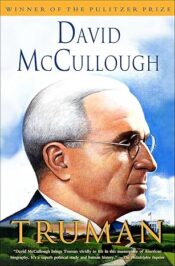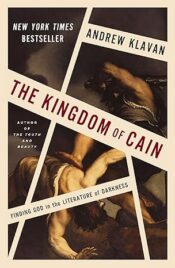
With Musket and Tomahawk by Michael O. Logusz
 With Musket and Tomahawk covers the Wilderness War of 1777.   Author Michael Logusz covers the Wilderness Campaign from about April of that year until Burgoyne’s surrender in October. He approaches his narrative through a day by day chronology of events intermixed with commentary, background information and anecdotes about interesting people. This is a great book to read in conjunction with Randall’s Ethan Allen biography and Chernow’s Hamilton. One character who shows up in both of these books is Philip Schuyler. Logusz provides a much different view of this patriot, than do either of the aforementioned biographers.
With Musket and Tomahawk covers the Wilderness War of 1777.   Author Michael Logusz covers the Wilderness Campaign from about April of that year until Burgoyne’s surrender in October. He approaches his narrative through a day by day chronology of events intermixed with commentary, background information and anecdotes about interesting people. This is a great book to read in conjunction with Randall’s Ethan Allen biography and Chernow’s Hamilton. One character who shows up in both of these books is Philip Schuyler. Logusz provides a much different view of this patriot, than do either of the aforementioned biographers.
In With Musket and Tomahawk, General Schuyler comes out much more favorably than he does in Randall’s biography of Ethan Allen, and much more complete than in Chernow’s Hamilton. (Schuyler was Hamilton’s father-in-law.) Schuyler was in charge of the northern department when his subordinate, General St. Clair, chose to abandon Fort Ticonderoga at the onset of the Wilderness campaign in 1777. The surrender of the fort was a blow to American prestige as it had been captured only a short time before by Benedict Arnold and Ethan Allen with a cadre of Green Mountain Boys.
Allen does not make an appearance in With Musket and Tomahawk, but one of his foremost lieutenants, Seth Warner does. This book does not mention the tension between the New York General Schuyler and the Warner’s Green Mountain boys, although prior to the war there was considerable strife between them over contested land grants. Warner fares well in Logusz’s telling of the campaign, as does Benedict Arnold. When Congress replaced Schuyler with Horatio Gates, Arnold’s fortunes waned. The two men detested one another and Gates sought to replace him and took credit for all of Arnold’s achievements. It was Arnold who led the attack at Saratoga. He was a phenomenal and fearless leader of troops.  He was in the thick of the battle and was finally forced from the field when he was shot in the leg. Gates, on the other hand, was somewhat less impressive as a warrior. Subsequently he not only blackguarded Arnold but was also later involved in the Conway Cabal, in which he attempted to discredit and replace George Washington through a whispering campaign.
It is interesting to compare the reactions of Schuyler and Arnold. Schuyler went on to continue to support patriot cause in spite of his shabby treatment. Arnold eventually turned traitor.
Logusz doesn’t confine his narrative to well known patriots and loyalists, however. He also sneaks in numerous anecdotes about lesser-known characters like patriot sniper Timothy Murphy. Murphy had a custom made double-barreled long rifle with which he dispatched many a British officer as depicted in the following account:
Perched high up in a thick oak tree, Timothy Murphy sighted a high-ranking British officer, dressed in an immaculate uniform astride a white horse. Undoubtedly, the sight of the beautiful pure white horse was what first caught Murphy’s eye. The patriot rifleman also concluded that the man on the exotic white animal was one of high stature. No less than a general.
It would, of course, be a long shot. Well over 300 yards, if not 400. But it could be done. With an eagle eye, Murphy began to sight in. He would wait until the horseman had halted. As long as he reined his horse back and forth, Murphy was in no position to take him down.Â
…
Reining his horse around to the front, General Fraser faced the patriots directly. Sitting fully upright behind the 24th Foot, he began to issue orders. Not far behind, General Burgoyne was on his horse observing Fraser. “If anyone can save this situation and turn it around, it will be Fraser.”
Or so Burgoyne thought.
As Burgoyne was observing and Fraser was directing the defense, Murphy was slowly squeezing the trigger from hundreds of yards away. Suddenly, Burgoyne witnessed Fraser toppling from his horse. …
Murphy shows up several other times in Logusz’s telling of the campaign.
Readers of WWTFT may recognize the name General William Hull from several clippings pulled from the Niles Weekly Register about the surrender of Detroit at the beginning of the War of 1812. During the Wilderness Campaign of 1777, Major Hull distinguished himself with the 8th Massachusetts militia. At a place called Freeman’s farm, during the first battle of Saratoga …
The 8th Massachusetts was virtually decimated. With its commander killed and well over 50 of its personnel dead, wounded, or missing, the 8th was on the verge of collapse. Major Hull assumed command. Though suffering a deep bayonet slash across his lower stomach, he continued to lead. Despite its losses, the units surviving militiamen continued to resist ferociously. …
And this was the reason that President Madison chose to commute Hull’s court martial sentence of death, after his surrender of Detroit.
These are but a few of the many interesting people and events covered in this book.  Unfortunately, it’s difficult to adequately convey more in the scope of a brief review. However, one last thing that does bear mentioning is the beautiful art work of H. David Wright included in the middle of the book. This was a nice addition to the book.
With Musket and Tomahawk is well-researched and very thorough (although the author did confuse Daniel Webster and Noah Webster). It is extensively footnoted and contains an impressive bibliography. Logusz does his best to enliven the telling and conveys a lot of information in an interesting and informative history. This reader is looking forward to the second volume.
 The posts are coming!
The posts are coming!


0 comments
Kick things off by filling out the form below.
Leave a Comment